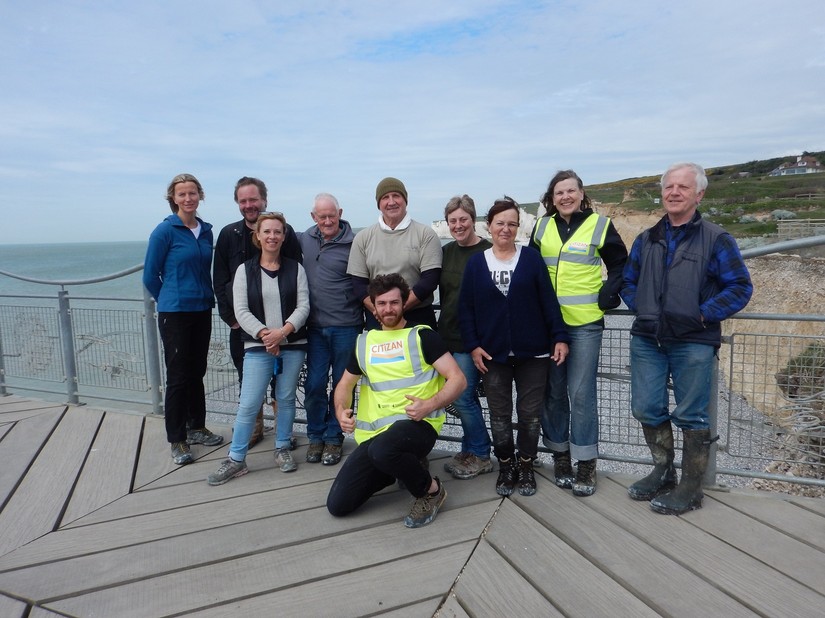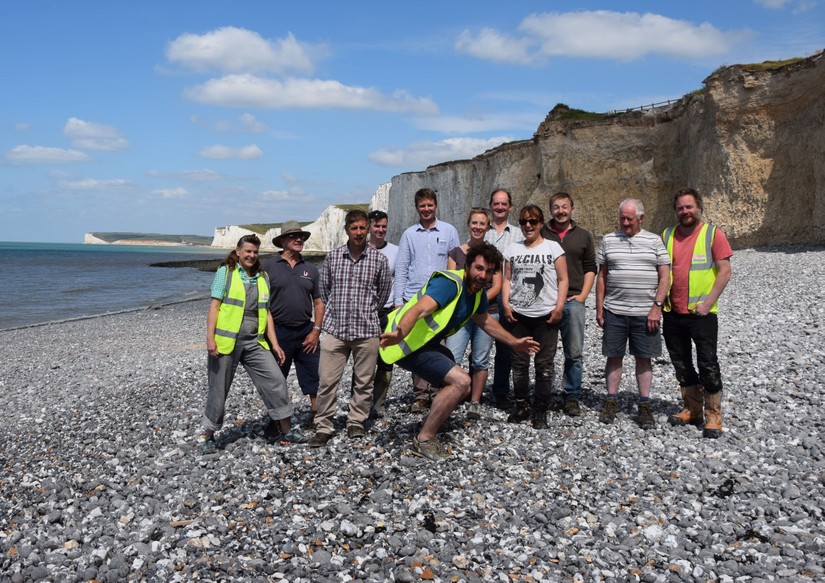The South East team’s first training sessions: Crowlink, Birling Gap, May and June 2015
14/08/2015 | Lara Band
One of our project partners is the National Trust so when the possibility of running our first ever training session in conjunction with their Seven Sisters Archaeology Project (SSAP) came up, we jumped at the chance. In May this year, While SSAP volunteers were high above us up on the cliff excavating the remains of the Coastguard Cottages at Crowlink with the Heritage Services team at Eastbourne Borough Council, we were on the foreshore recording the remains of a shipwreck, reputedly that of the Coonatto, a bark-rigged clipper that ran aground on its way from Port Adelaide to London in 1876.
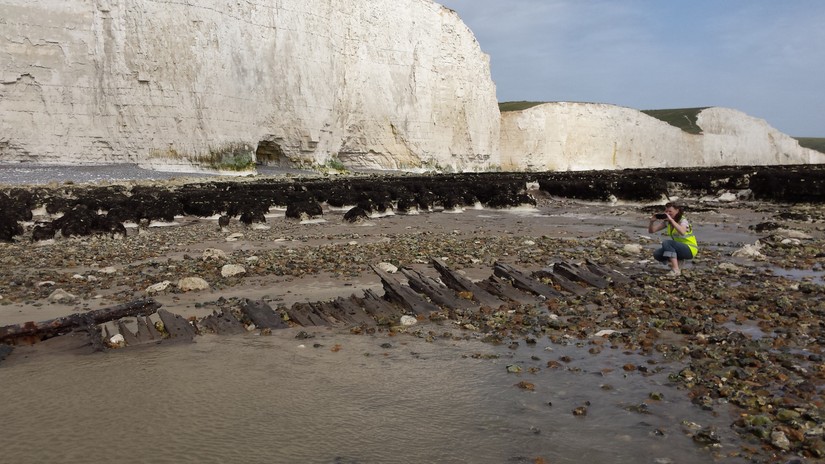
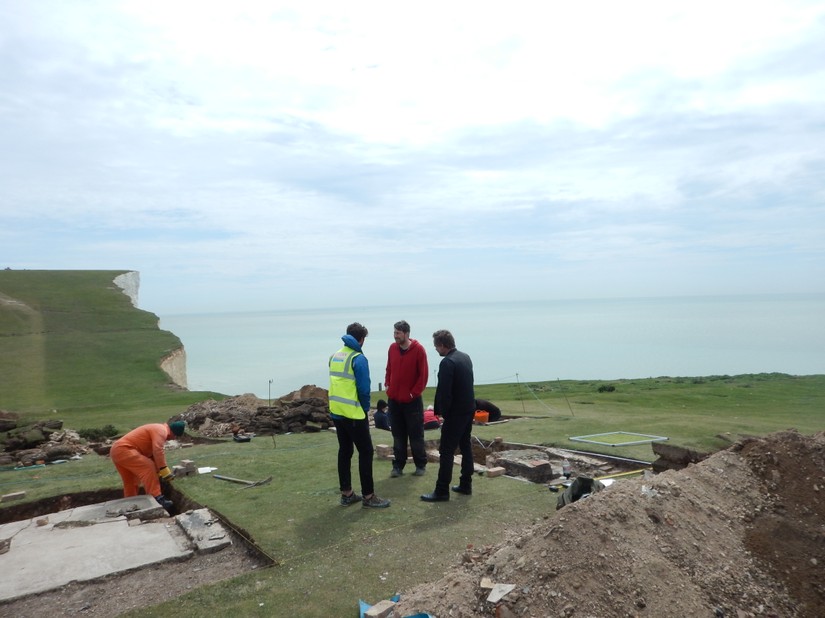
The wreck can only be reached by walking along the beach at low tide; the nearest access point is at Birling Gap and the walk takes up to an hour. The going gets rockier and rockier and more and more slippery; it’s no easy, short stroll. Health and Safety considerations are a hugely important part of our job, as they should be for anyone working on the foreshore, so when planning the event we checked the tide tables and ran our plans past the local coastguard. On the morning of the event there was a fairly strong onshore wind so we talked with the coastguard and on their advice decided to leave the wreck earlier than we’d planned. We were also lucky enough to have a volunteer who had spent a lot of time on that particular stretch of foreshore and knew the tide conditions well: the local knowledge of volunteers is invaluable to CITiZAN.
We’d carried out some research on the wreck prior to the event but decided with this site, as with our subsequent ones, not to do all possible research ourselves. Documentary research is a great way for people who find the foreshore inaccessible to become involved in CITiZAN and we want to encourage everyone to join in! It was good to get some basic information about the wreck together however: we found several secondary sources that identified the wreck as the Coonatto and using one of my favourite resources, Trove, found a photograph of the ship in Port Adelaide as well as a newspaper article on the ship’s demise. Another of my favourite shipping related resources is the Lloyd's Register; the 1874-75 entry for the Coonatto not only gives the dimensions of the ship, shipbuilder, ship owner and master but also notes modifications and repairs. In this case the hull had been sheathed with felt and ‘yellow metal’, a copper and zinc alloy, in 1874; this sheathing would have protected the hull from attack and fouling by marine organisms.

With volunteers gleaned from the SSAP we started the event in the classroom of the visitors’ centre at Birling Gap with illustrated talks on the CITiZAN project, the archaeology of ships, resources for documentary research and, of course, Health and Safety. For the second training event we expanded the session to include offset planning practice. With a 10m baseline set up across the classroom floor, the volunteers produced some excellent scale plans of books, coffee mugs, a laptop and a box of teabags and gained skills that would help them tackle the recording of the wreck on the foreshore the following day.
For the both training events we were lucky enough to be joined by Eliott Wragg of the Thames Discovery Programme (TDP), a fount of knowledge on the archaeology of ships and shipbuilding. In a nice piece of synchronicity Eliott has recently been working on the foreshore in Rotherhithe, London – the very place that the Coonatto was built. We also had one of the TDP’s FROGs helping us. It was great to work with a volunteer who gained their skills on one of the projects that influenced CITiZAN and who could pass on his skills and knowledge to CITiZAN volunteers during the recording sessions.
During the foreshore sessions the volunteers completed a scale drawing of the wreck, which will be available for viewing soon via our interactive map. The volunteers also learned how to fill in the timber vessel recording sheets that form the basis of our soon to be launched mobile app. So what did we find? In general the wreck fitted with the measurements in the Lloyd’s Register and is now lying on one side. The ship was built of composite iron and timber construction with diagonal external planking. We also found fragments of zinc based sheeting with a felt lining attached to the outer timbers, just as described in the Lloyd’s Register. Since the event volunteers have been carrying out their own research and have sent us links to online images of the ship in different museum collections such as the National Maritime Museum and Seaford Museum as well as reference to an unpublished dissertation (Robertson, 2004) a copy of which is held by Sussex Archaeological Society.
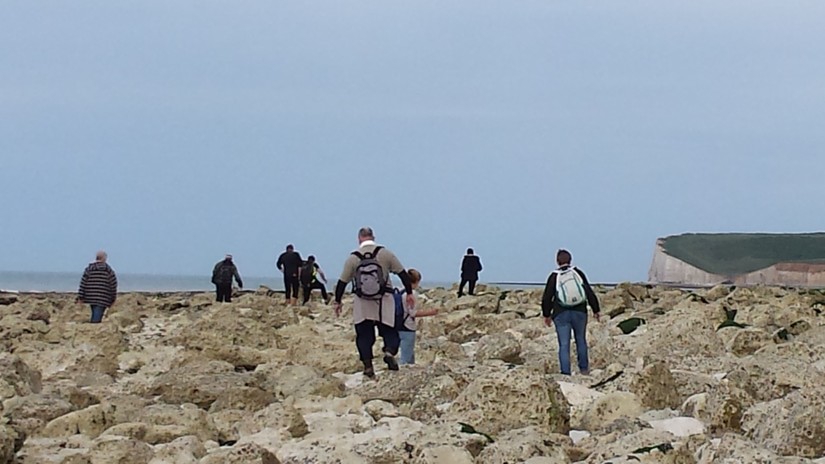
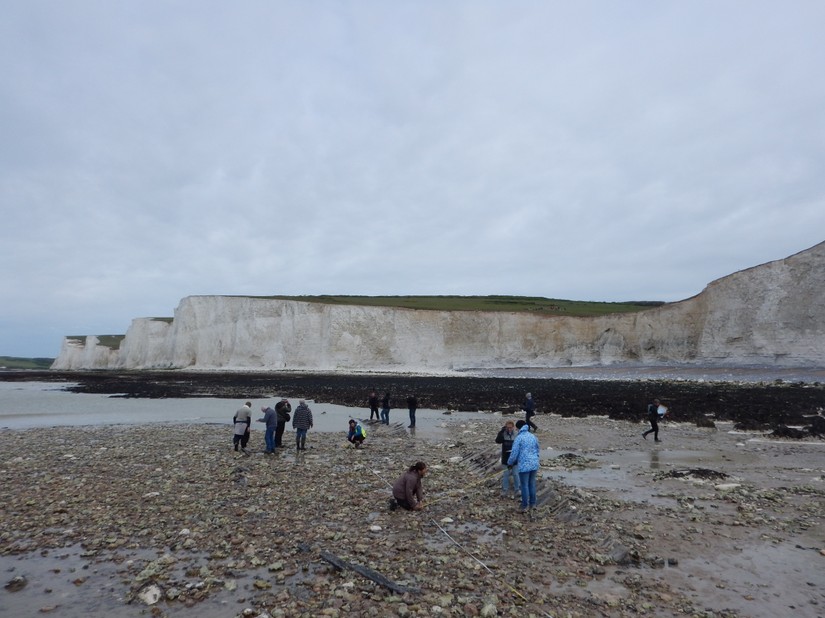
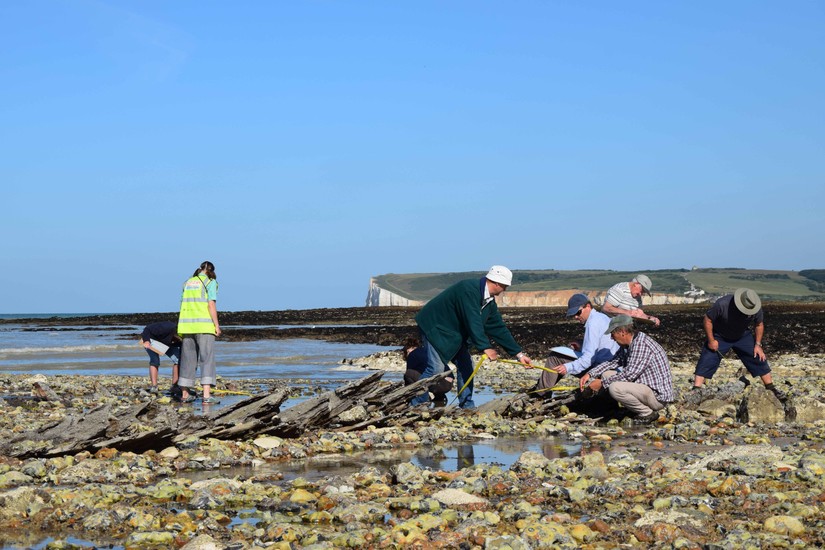
We had great fun on the two training events with a great bunch of volunteers; most of the first event's volunteers returned for the second event and some are also going to join us at Pett Level later this month. We’re going to carry on working out at Birling Gap as there’s still work to be done on the Coonatto and plenty more along the foreshore to survey and record. We haven’t set the dates yet but when we do they’ll be on our events page. You can also get involved by signing up to our newsletter and registering to become a CITiZAN site surveyor. Looking forward to meeting you on the foreshore!
References
Robertson, P. 2004. The Seven Sister’s Marine Conservation Area – an archaeological perspective. Unpublished MA dissertation, St Andrew's University
